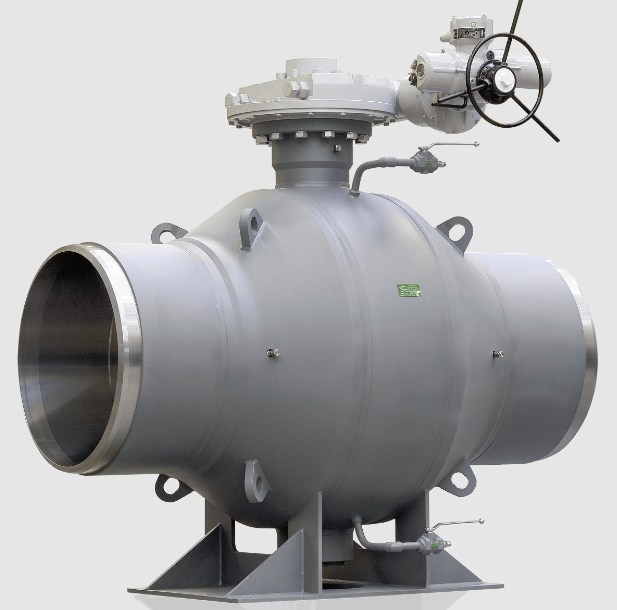
Valve design has come a long way in the past few decades. Thanks to new technology, we now have valves that are much more reliable and easier to use. One such type of valve is the fully welded ball valve. As the name suggests, this type of valve is made up of two or more balls that are welded together. This makes for a much more durable and reliable valve, as the balls are unable to move independently.
There are many benefits to using fully welded ball valves in your manufacturing process. Not only are they easier to use, but they also offer greater reliability and performance than traditional valves. If you’re looking for a better way to design your valves, give Fully Welded Ball Valves a try!
What is a Fully Welded Ball Valve?
A fully welded ball valve is a type of valve that utilizes a twin-wall construction to prevent air or fluid leakage. The inner wall is made of solid steel, while the outer wall is a thin sheet of metal that’s welded to the inner wall. This creates a virtually leakproof valve, which is why Fully Welded Ball Valves are becoming more and more popular in industrial and water treatment applications.
One big advantage of Fully Welded Ball Valves is their durability. Unlike traditional valves that can wear down over time due to leaks and pressure fluctuations, a Fully Welded Ball Valve will typically last much longer without requiring any repairs or replacements. Additionally, Fully Welded Ball Valves are much easier to service – all you need to do is remove the cover and replace the valve assembly.
While there are some drawbacks to Fully Welded Ball Valves (most notably their higher cost), they’re rapidly becoming one of the most popular types of valves on the market today. If you’re looking for a long-lasting valve solution that’s tough as nails, Fully Welded Ball Valves should definitely be at the top of your list!
Benefits of Fully Welded Ball Valves
Fully welded ball valves can offer a number of benefits over traditional valves, such as reduced weight and increased durability. They can also be fitted with a wider range of fittings, making them more versatile. Fully welded ball valves are currently the most popular type of valve on the market, and their popularity is likely to continue increasing in the future.
Advantages of Fully Welded Ball Valves over Other Valve Types
Fully Welded Ball Valves are known for their ability to withstand greater pressures and temperatures than other valve types. This makes them a popular choice for high-pressure applications, such as oil and gas drilling. Additionally, fully welded ball valves are often less expensive to install than other types of valves.
Disadvantages of Fully Welded Ball Valves
The main disadvantage of fully welded ball valves is their susceptibility to leakage. This can be due to a number of factors, including poor welding techniques and material quality. Fully welded ball valves also require more frequent maintenance than alternative valve designs, and they are not as tolerant to temperature and pressure variations.
Finally, fully welded ball valves are more expensive than other valve types.
Future of Valve Design with Fully Welded Ball Valves
Fully welded ball valves are the future of valve design and with good reason. They’re more efficient and durable than traditional ball valves, and they can handle higher pressure and temperatures without damage. In addition, they’re easier to assemble and maintain.
While fully welded ball valves have been in use for a while now, they’re still relatively new technology. That’s starting to change, though. Companies like Daikin are starting to adopt them heavily, and Valve has even announced that it plans to fully weld all its ball valves by 2020.
There are a few reasons why fully welded ball valves are such a promising option. First of all, they’re much more efficient than traditional ball valves. This means that they can handle higher pressures and temperatures without breaking down.
In addition, they’re much easier to assemble and maintain. Assembling a traditional ball valve typically requires opening the valve body up so that the parts can be properly installed, whereas fully welded ball valves can simply be assembled using standard bolts and screws.
Finally, fully welded ball valves are resistant to wear and tear. This is largely due to their construction: Instead of using separate components that can wear down over time, fully welded ball valves consist of a single piece of metal that’s repeatedly heat-treated and stress-tested.”
What are the competitors of Fully Welded Ball Valves?
There are a few types of ball valves that compete with fully welded ball valves. These include:
Fully welded ball valves offer many advantages over their competitors. They are strong and durable, making them ideal for high-temperature applications. They also have a low cost of ownership and can be easily replaced if damaged. Fully welded ball valves are likely to remain the dominant type of valve in the future unless something new emerges that can beat their performance.
Conclusion
Fully welded ball valves may soon be the standard for valve design, as they offer many advantages over traditional designs. They are more resistant to wear and tear, which means they can last longer and require less maintenance.
Additionally, fully welded ball valves are easier to assemble and maintain, which is a major advantage in high-volume applications. In short, fully welded ball valves could soon become the norm for all types of valve design. So whether you’re looking to improve your manufacturing process or simply want a valve that will last longer, consider investing in a fully welded ball valve.





